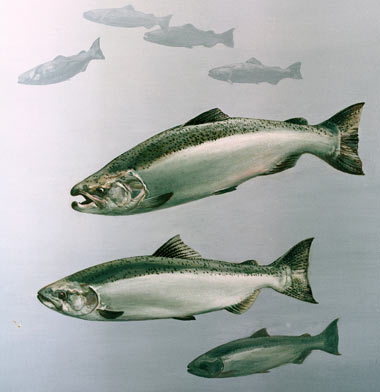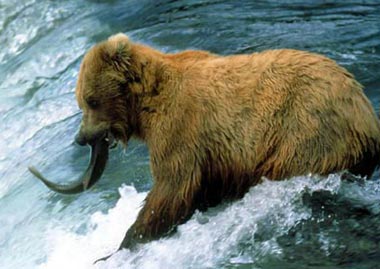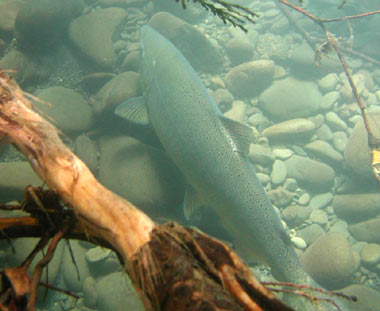King Salmon; illustration by Robert W. Hines / USFWS Digital Library.
Official State Fish of Alaska
The giant king salmon (Oncorhynchus tshawytscha) was designated the state fish of Alaska in 1962 (also called Chinook salmon, spring salmon, quinnat, tyee, tule, and blackmouth salmon). All State Fish
King Salmon Facts
The king salmon is native to the Pacific coast of North America and is the largest of all Pacific salmon (adults can reach over 100 pounds). King salmon hatch in fresh water, spend part of their life in the ocean, then return to the fresh water stream where they were born to spawn (they die after spawning). Some salmon travel more than 2,000 river miles over a 60-day period to reach their home streams. Salmon do not feed during this freshwater migration, and their condition gradually deteriorates as stored body materials are used for energy and the development of reproductive products.
Each female salmon deposits from 3,000 to 14,000 eggs in several gravel nests. The newly hatched fish live in the gravel for several weeks (until the nourishment in the attached yolk sac is absorbed). Young salmon then consume plankton and later insects until they migrate to the ocean in their second year of life. While at sea salmon feed on a variety of ocean organisms including herring, pilchard, sandlance, squid, and crustaceans. When sexually mature (between 3 - 7 years of age) salmon return to their home fresh water streams to spawn.
Grizzly bears gather at prime fishing spots in Alaska when the salmon run upstream for spawning, putting on a spectacular display catching and feasting on the fish (fat from the salmon helps sustain the bears through the long winter ahead).



